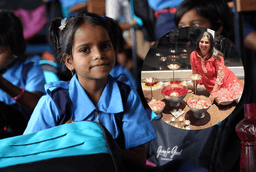

- 15 May 2024

An expectation for a bright future in India calls for addressing education first. Education in India has long suffered from issues like low literacy rates, dropout rates, a lack of gender equality, and other socio-economic factors that persist to this day. The Right to Education (RTE) Act, enacted in 2009, has been a step upward in this regard, pushing the Indian education system towards better standards. But what exactly does the RTE Act of 2009 entail?
The Right of Children to Free and Compulsory Education Act, or RTE Act, was enacted by the Indian Parliament on August 4, 2009, under Article 21A of the Indian Constitution. This legislation aims to provide free and compulsory elementary education to every child between the ages of 6 and 14, irrespective of their gender, caste, creed, or family income. It came into effect on April 1, 2010, making India one of the 159 countries worldwide that guarantees free education for at least nine years. The RTE Act was a much-needed step towards addressing the downward spiral of the education system and improving learning outcomes across the country by making significant changes in the foundations of education.
The RTE Act has several crucial features that make it a powerful tool for ensuring universal access to education:
With RTE implemented, a child doesn’t have to be deprived of school simply due to socio-economic reasons. According to the act, schools cannot deny admission to children based on their financial status, caste, or any other discriminatory factors. Every child must be admitted to a school, ensuring no child is left behind.
One of the core aims of the RTE Act is to introduce more inclusivity in education. Hence, to break social barriers and provide equal opportunities from an early age, private schools are required to reserve 25% of their seats for children belonging to economically weaker sections (EWS) and disadvantaged groups (DGs). The government then reimburses these schools for admitting children from disadvantaged backgrounds.
To preserve equality, schools are prohibited from conducting interviews for admissions or charging any capitation fees to the families applying under the RTE Act. This is an attempt to provide them with an equal stance in society and avoid any scope for unnecessary judgment.
Children cannot be held back, expelled, or required to pass a board examination until the completion of elementary education. This emphasizes continuous evaluation and gives the child time to adjust to a stress-free learning environment.
One of the biggest issues in Indian schools is the lack of adequate infrastructure where students have no books, benches, toilets, and sometimes no teachers to teach. The Act sets minimum norms for maintaining a teacher-student ratio of 1:30, providing ramps for students with disabilities, clean drinking water facilities, and playgrounds.
Unfortunately, we still have children in our country who have never been to school or have dropped out before completing their education. The RTE Act offers provisions for identifying and providing special training to these out-of-school children, ensuring no child is left behind.
Parents have a huge role to play when it comes to a child’s education. All government and aided schools are obligated to create a School Management Committee composed of 75% of members, including parents or guardians, promoting community involvement in the education system.
While the RTE Act has set the stage for universal access to education, its successful implementation requires the collective efforts of various stakeholders, including the government, parents, corporate companies, and NGOs.
Awareness campaigns need to be intensified to educate communities, especially in rural and marginalized areas, about the provisions and benefits of the Act. Local authorities and NGOs must proactively identify out-of-school children and facilitate their admission and retention. Spreading the word is key!
Lack of funding is an issue that keeps countless schools in India from providing quality education to their students. But is funding simply the government’s responsibility? No, it’s not. CSR initiatives and even individual donations play a significant role in ensuring that all schools meet the prescribed infrastructure norms and have sufficient resources.
Although children have a 25% claim in private schools, many private schools fail to give admissions due to delays in reimbursements. Measures must be taken to eliminate discrimination against underserved children in private schools and promote an inclusive learning environment.
Parents and school committees need to be more involved. This promotes participation, ensures accountability, identifies gaps, and allows for tailored solutions aligned with the children's needs. Ultimately, collective responsibility is what we need to ensure every child's right to a quality education.
The RTE Act 2009 has been a significant step towards ensuring that every child in India has access to quality education. While the Act has led to an increase in enrollment rates, particularly at the upper primary levels, challenges remain, such as discrimination against children, a lack of infrastructure, and delays in the admission process. However, by working together, we can bridge this gap and create an environment where every child can realize their full potential and contribute to building a more equitable future.
Exclusively written for Giving for Good Foundation by Bhairavi Hiremath
Sources:

With words as her medium and a diary full of scribbled ideas, she is usually found looking for ways to use her writing to impact for Good. If she’s out of sight, she’s probably either reading, petting cats, jamming to retro Bollywood, or of course, writing!